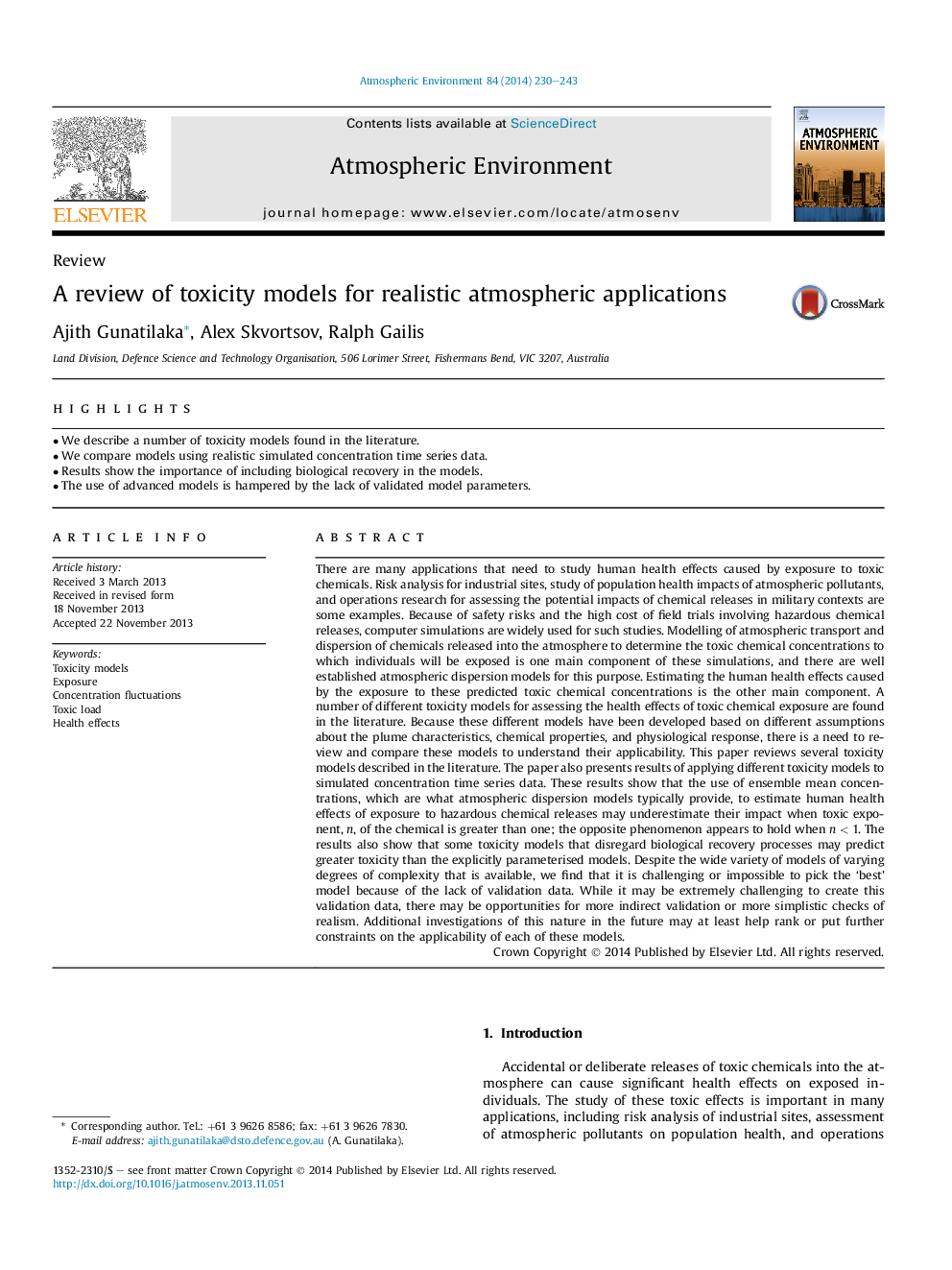| کد مقاله | کد نشریه | سال انتشار | مقاله انگلیسی | نسخه تمام متن |
|---|---|---|---|---|
| 6341042 | 1620387 | 2014 | 14 صفحه PDF | دانلود رایگان |
عنوان انگلیسی مقاله ISI
A review of toxicity models for realistic atmospheric applications
ترجمه فارسی عنوان
بررسی مدل های سمیت برای کاربردهای جوی واقعی
دانلود مقاله + سفارش ترجمه
دانلود مقاله ISI انگلیسی
رایگان برای ایرانیان
کلمات کلیدی
مدل های سمی، گرفتن در معرض، نوسانات غلظت، بار سمی، اثرات بهداشتی،
موضوعات مرتبط
مهندسی و علوم پایه
علوم زمین و سیارات
علم هواشناسی
چکیده انگلیسی
There are many applications that need to study human health effects caused by exposure to toxic chemicals. Risk analysis for industrial sites, study of population health impacts of atmospheric pollutants, and operations research for assessing the potential impacts of chemical releases in military contexts are some examples. Because of safety risks and the high cost of field trials involving hazardous chemical releases, computer simulations are widely used for such studies. Modelling of atmospheric transport and dispersion of chemicals released into the atmosphere to determine the toxic chemical concentrations to which individuals will be exposed is one main component of these simulations, and there are well established atmospheric dispersion models for this purpose. Estimating the human health effects caused by the exposure to these predicted toxic chemical concentrations is the other main component. A number of different toxicity models for assessing the health effects of toxic chemical exposure are found in the literature. Because these different models have been developed based on different assumptions about the plume characteristics, chemical properties, and physiological response, there is a need to review and compare these models to understand their applicability. This paper reviews several toxicity models described in the literature. The paper also presents results of applying different toxicity models to simulated concentration time series data. These results show that the use of ensemble mean concentrations, which are what atmospheric dispersion models typically provide, to estimate human health effects of exposure to hazardous chemical releases may underestimate their impact when toxic exponent, n, of the chemical is greater than one; the opposite phenomenon appears to hold when n < 1. The results also show that some toxicity models that disregard biological recovery processes may predict greater toxicity than the explicitly parameterised models. Despite the wide variety of models of varying degrees of complexity that is available, we find that it is challenging or impossible to pick the 'best' model because of the lack of validation data. While it may be extremely challenging to create this validation data, there may be opportunities for more indirect validation or more simplistic checks of realism. Additional investigations of this nature in the future may at least help rank or put further constraints on the applicability of each of these models.
ناشر
Database: Elsevier - ScienceDirect (ساینس دایرکت)
Journal: Atmospheric Environment - Volume 84, February 2014, Pages 230-243
Journal: Atmospheric Environment - Volume 84, February 2014, Pages 230-243
نویسندگان
Ajith Gunatilaka, Alex Skvortsov, Ralph Gailis,
